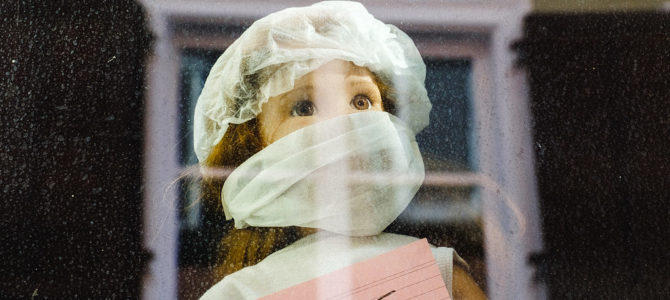
We are not destroying our economy; the Chinese coronavirus (COVID-19) is destroying the economy. Fortunately, President Trump now seems to understand that to save the economy we must also save lives by slowing down and defeating this disease. He has rightly described himself as the equivalent of a wartime president.
Nonetheless, some on the right are criticizing the federal, state, and local officials’ tough measures and recommendations. For example, in a Federalist article titled “Will The Costs Of A Great Depression Outweigh The Risks Of Coronavirus?” Joy Pullmann is concerned that we are destroying our economy and our children’s futures “to keep alive less than 1 percent of our population until the next flu season.”
In the New Criterion, Heather Mac Donald bemoans the “destruction being wrought on the U.S. and global economy from this unbridled panic.” Similar arguments have appeared elsewhere, including in The New York Times.
It is not necessarily cold-hearted to be concerned about the economy, even during a pandemic, for an economic depression also inflicts real suffering. It is indeed unrealistic to maintain a lockdown for many months until we have a proven vaccine or antiviral treatment. But it must also be acknowledged that enormous economic damage is inevitable in a pandemic like this.
Normal Was Never an Option
Keeping the economy humming along like normal was never an option. Even without government intervention, much of our society would eventually shut down on its own. No doubt some business owners would try to carry on, but many of their customers would stay away as the pandemic worsened. The economy was in trouble as soon as the Chinese plague got here, because people will not carry on as usual just to save the economy.
We should also blame China for this damage. The Chinese government’s delay and dishonesty ensured that the disease spread to the rest of the world, and now we are all paying the price. Even if the United States had done the impossible and kept the virus out indefinitely, we would still endure significant economic losses as the rest of the world suffered through the pandemic.
But there was no real hope of riding this out in Fortress America (although some of Trump’s travel restrictions helped slow the spread). The virus is here, with tens of thousands of known cases in the United States. Absent a miracle, it is going to hurt us a lot no matter what we do.
The Real Bottleneck Is Health Care
The immediate point of potential catastrophe is the health-care system. As we have seen, particularly in Italy, if too many people are infected at a time, hospitals will not be able to keep up. Coronavirus patients who might have survived with proper care will die as the medical system is stretched beyond capacity and heartbreaking decisions are made about who gets lifesaving care.
This problem is exacerbated by medical staff’s vulnerability to the virus. Unlike the seasonal flu that many have compared this to, there is no coronavirus vaccine to protect doctors and nurses from becoming infected and ending up as patients themselves, which would make the health-care system even more unstable.
Furthermore, a medical system overwhelmed by coronavirus will also struggle to care for other patients. From cancer sufferers to stroke victims to expectant mothers needing an emergency C-section, many more will be harmed if our hospitals, doctors, and nurses are pushed beyond their limits.
If unaddressed, this medical crisis would become a social, economic and political crisis. Fear would increase, and parents would pull children from schools, customers and workers would stay home, churches and other associations would curtail their activities or close, and there would be hell to pay for politicians seen as prioritizing the economy over American lives and Wall Street over Nana.
What the breaking point would be is unpredictable, but it would come if the pandemic persisted unabated. Medical disaster will trigger economic calamity and political upheaval.
There Is No Easy Way Out
Thus, MacDonald’s question, “compared to what?” can be flipped back on her and her allies. They deprecate the economic harms they attribute to government restrictions, quarantines, bailouts and cancellations, but compared to what? There is no plausible pathway that does not result in significant economic hardship.
It is reasonable to debate the tradeoffs between public health and the economy (while recognizing the limits of our knowledge), but these discussions must recognize that there is no easy way out. Doing nothing will lead to massive economic damage, as will doing a little, a middling amount, and even a lot.
Unless, of course, the virus isn’t really that bad, in which case we are overreacting. Instead of locking everything down and staying home for the time being, we should go about our business more or less as we do every cold and flu season. Thus, there is a lot of overlap between those downplaying the danger of this disease and those arguing that the economic damage of our response to it outweighs the harm it will do.
Mac Donald in particular downplays the danger of the virus. She calculated its risk to our society based on coronavirus death totals that have already increased more than tenfold since her article was published. She wanted to “put the coronavirus risk into context with opioid deaths, homicide deaths…flu deaths, and traffic deaths,” but she ignored that we spend a great deal, directly and indirectly, to make driving safer, reduce flu deaths, combat the opioid epidemic, and lower homicide rates.
To offer one small example, our increasingly strict mandates about child car seats are not free. It is true that the immediate disruption of our coronavirus response is greater than we are used to, but it is new and potentially much more deadly than the other causes of death Mac Donald wants to compare it to.
Optimistic Projections Are Already Disproven
Pullmann, in contrast, notes some of the grim calculations of experts in looking at the range of risk that we face. The most prominent of these dire forecasts, issued by the Imperial College COVID-19 Response Team, estimates the potential toll as at least 2.2 million American deaths (probably more) from the virus alone in an uncontrolled outbreak, a number only cut in half by a moderate ‘mitigation” strategy. The forecast suggests aggressive “suppression” strategies will greatly reduce these numbers, perhaps into the mere thousands, but might need to remain in place, with occasional easing, for a year or more until a vaccine is proven effective and safe.
It is this last scenario of a year of economic lockdown that has caused some people to protest that the cost is too high and the cure is worse than the disease. But they should not rely on obviously mistaken sources in making their case.
Pullmann, for example, cites Richard Epstein, a law professor affiliated with the Hoover Institution, who argued that the United States will max out at around 500 deaths. We have already passed that. Meanwhile, Italy has recorded more than 500 coronavirus deaths in a single day, although thankfully there are signs that its lockdown is starting to bring the disease under control. Despite Epstein’s optimism, there is no obvious reason not to expect the same in the United States. Never send a lawyer to do a doctor’s job.
Another optimistic piece Pullmann cites does not even mention the catastrophe of Italy, instead extrapolating from the numbers from the Diamond Princess cruise ship. It is one thing to note that the global data are imperfect (it should be assumed that China is lying about its numbers), but the answer is not to focus on one small data set to the exclusion of the rest of the world.
Everyone Needs to Sacrifice This Time
What we see there suggests there is no easy way out. To get through this we will need a mix of strategies that adapt to local conditions and changing circumstances, but which will all require sacrifices. Using lockdowns and other aggressive strategies now, as the disease is beginning to explode across America, will hopefully buy us the time we need to adapt and contain the virus without shutting everything down until a proven-safe vaccine is available. As Yuval Levin puts it, we need a hard pause, followed by a soft start.
For instance, improved testing will lead to better data overall as well as faster responses to new cases, and that combination may do a great deal to ease some of the more onerous restrictions. We will adapt to better protect our most vulnerable populations and we may hope for more effective treatments—even a partially effective antiviral treatment would be a huge boon. Slowing this plague’s spread with lockdowns buys us time to manufacture more masks and ventilators, prepare more hospital beds, test more people (and improve and expand our testing capabilities), and conduct trials on potential treatments.
As we debate how to protect lives and the economy, we must acknowledge that the economy, as well as public health, was in trouble as soon as the virus started to spread. Blame the virus and the Chinese government that lied about it.









